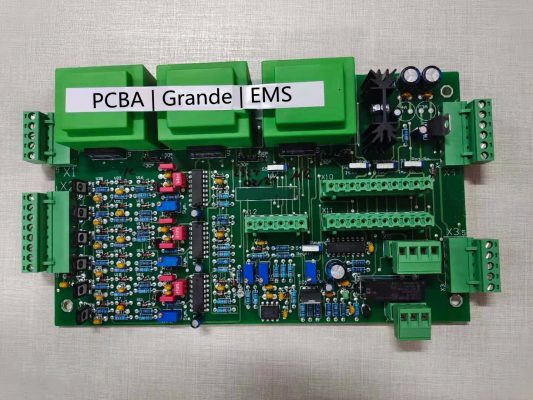1.Prepare production files
The preparation of production files is divided into two steps, including not only PCB design (layout) engineers, but also engineering reviewers from PCB factory.
First of all, regardless of whether the PCB design software is AD, Allegro or PADS, when the PCB Layout is about to be interactively produced, it is recommended to output the PCB file as Gerber for data confidentiality and actual production needs.
Gerber is currently the most common practice in the circuit board industry. The most common data format for Gerber data is RS-274-X. Simply put, it is the industry standard.
From the perspective of the PCB layout engineers, the task is completed at this step. And the rest thing is left to the factory.

After the Gerber file is packaged and sent to the board factory, it will not be directly produced. After all, the board factory is also afraid of a bunch of problems in the customer’s design that exceed their processing capabilities. For instance, if the line spacing is too small, direct production is likely to be short circuit. In case of a short circuit between the power supply and GND, the entire circuit board will spark with lightning after power-on.
Therefore, after the board factory obtains the customer’s Gerber file, it also need to review the production data, which is the reason why the production cost includes the engineering cost.
Board manufacturers usually use Genesis2000 to review Gerber file. (PS: Genesis2000 is mainly used by board manufacturers. If an engineer wants to check his Gerber, it is enough to learn a CAM350, there is no need to learn Genesis2000.)
The data review includes manufacturability inspection ( such as line width, line spacing, solder mask bridge, silk screen, etc.), electrical performance inspection ( like IPC netlist comparison), and at the same time, in the light of the requirements of the customer, combined with the factory’s own situation to adjust the file ( such as adjust the line width or stack up based on impedance requirements).
That’s to say, when the CAM review is completed, the data is handled, and the preliminary preparations have been completed here.

2.Manufacture circuit board
Circuit board manufacturing is a complicated process, and the overall process is roughly as follows:
The above picture is the production process of the multilayer board; If it is a double-sided board, the part circled in the red wire frame can be omitted. There are more than 20 steps in total. In order to make it easier for everyone to understand, we simplify the process and only list the key steps.
1) The copper-clad board should be dried and then cut into small pieces for production;
2) Corroded the inner circuit;
3) Perform pressing to combine the substrate and copper foil;
4) Drill holes, and then sink copper to make the vias have electrical properties;
5) Making the outer circuit;
6) Secondary copper, increase conductivity;
7) Printing green solder mask (blacksolder mask, whitesolder mask, red solder mask, colorful solder mask);
8) Printing silk screen;
9) Surface treatment;
10) Forming (V-CUT, Routing, etc.);
11) Test, such as flying probe test, impedance test, metallographic section analysis, etc.
The above listed items are simplified procedures, but it doesn’t mean that the steps that are not introduced are not important. In the actual production process, every step has its necessity. In order to catch up with the efficiency;However, some bad board factories will compress some steps, such as reduce or just remove the high-temperature baking time, which lead to some boards suffer from blistering and cracking of the copper skin during welding.

3.Produce circuit board
PCB production is in the factory, and for plenty of circuit design engineers, they are not really have opportunities to contact. However, a general understanding of PCB production and a reasonable estimate of the problems that may occur in the production process can make the design more reliable.
Given a couple of small examples to illustrate:
1) Since the circuit is formed by etching, the actual line width may differ from the ideal value. Usually the line width below 10mil is ±1mil, and the line width above 10mi is ±10%. Meanwhile, the etching factor will also affect the upper and lower line widths of the traces. Therefore, when calculating the impedance, the upper line width of the outer layer is about 1 mil smaller than the lower line width, and the value of the inner layer is about 0.5 mil.
2) Although the multi-layer board hasrake holes for alignment, there are still errors during pressing, so it will form layer deviation, and which can reach 3mil in some extreme cases. This may cause the traces of the upper and lower layers to overlap or deviate from the reference plane.
3) There are two mainstream silk screen production methods, one is inkjet and the other is printing by making silk screens. For the latter, the position of silk-screen printing will have a larger error. This is also the reason why precise positioning cannot be done through silk screen printing.

